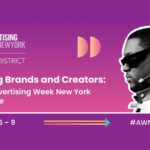From long term strategy to showing up in the right place, here’s how to truly connect with the most important audience for your brand.
By Rodrigo Samwell, Chief Commercial Officer at ESL FACEIT Group
If you truly want to connect with the next generation, gaming is the industry you need to be playing in. More than 3B people in the world are gamers, and around 500M are in sports class—which is to say that this is no niche group, constrained by the basal stereotypes of teenage boys and time spent indoors. In fact, it’s anything but.
First off, it’s important to set the context—important to unpack the difference between esports and gaming. Gaming is more of your mass market side of things, more your participation element, whether it’s your grandma playing Candy Crush on her phone, your brother on his PlayStation, or you on your PC.
Esports is the pro side of things, akin to Formula One, Premier League, NBA, etc. that takes place across a number of game franchises. Just like other live sports, it features big arenas, top athletes and sold out audiences.
Everyone, including the person sitting next to you right now, is a gamer. Gaming is a multi-billion dollar international industry, larger than music and movies combined. It’s where the next generation are connecting, playing and creating. So how do you and your brand get involved?
This was the question answered in a session at Advertising Week Europe last month, via an expert panel including Giulia Zecchini, Commercial Partnerships Strategy Director at ESL FACEIT Group and Megan Cheong, Client Services Director at GEEIQ, chaired by Izzy Ashton, Senior Account Director at Propeller Group.
Together, they unpacked what brands and businesses need to know about connecting with the next generation through gaming and esports—and how to do it well—while mapping out a few key takeaways.
The first step brands should take
The first mistake brands make in their approach to gaming is only testing the waters, according to Zecchini. Gaming audiences are not used to being bombarded with branding as traditional sports fans are.
“This sounds controversial because a lot of people say dip your toes in gaming, see if it works for you. I disagree with that,” said Zecchini. “If you enter the gaming and esports space, you need to have a long term strategy because the gaming audience is very vocal.”
For Zecchini, not only do brands need to develop a long term strategy, but it must be done authentically. Because gaming’s next generation audience is savvy. They smell inauthenticity a mile off, and they’re not afraid to call it out. To establish this authentic approach, Zecchini believes brands need to work with the partners that know this space well.
Cheong agreed, adding that brands need to know what they want out of their investment in the gaming space, be it visibility or building communities. ,
“With gaming and with this new media, there’s so much brands can offer that really feels like a meaningful utility to users that they might not be able to offer in traditional marketing mediums,” she explained.
Ultimately, the advice for brands from both speakers is, develop a long term plan, understand your audience, use the community’s language and give them something they want. Because that’s where the real magic of connection takes place.
When a brand intertwines with the community
When done correctly, brands show up in ways that really resonate with esports audiences. “Gaming has the great advantage of being…a bit younger, a bit more fun, a bit more dynamic. So we can definitely play around with our partnerships a bit more,” said Zecchini, naming Intel, Monster and DHL as prime examples.
She told the story of the DHL partnership, which has been ongoing for the last eight years. At previous ESL One tournaments in Birmingham, the audience chanted the brand’s name. Repeatedly. A situation most marketing leaders can only dream of. What the brand did well, added Giulia was they offered the community rewards, but they also, importantly, used the community’s native language to produce the content. “It was intertwined fully with what the gaming community would want to see,” she said.
Cheong added that she remembered going to her first tournament, seeing the audience dressed in DHL t-shirts with DHL face paint on. “It’s just such a great example of how you can make such a strong impact in the community,” she said.
A digitally native audience
When a brand steps into the gaming ecosystem, they’re connected to three million gamers, 451 million esports fans, 24/7, 325 days a year. The always-on nature of the industry offers brands the perfect continual space through which to connect with their audience. As Zecchini said, “It gives the perfect opportunity to show up in a lot of different ways and interact with people in different ways as well.”
She adds that esports and gaming give brands a rare opportunity to continue their messaging both on and offline, through tentpole events and digital activations. Brands can step into a space, both virtual and IRL, where people are already naturally hanging out.
Gaming also keeps audiences engaged. The average time someone spends looking at something on social media is, if generous, two to five seconds, Cheong explained. The time it takes to double tap or write a comment. This is aligned with the relentless press about how short next generation attention spans are. But, with virtual gaming platforms, “the average time a user spends in a branded environment on Roblox is up to ten minutes. That’s ten minutes of a user being in a space entirely shaped [by your brand],” she said.
The next generation audience are naturally digitally native. They’re more engaged on gaming platforms but, “they’re also more engaged across all digital platforms,” Cheong said. “We consume content as much as we play video games.”
This digitally native audience is also producing its own content. From gameplay videos to backstage commentary, “everyone’s a content creator in the gaming space,” Zecchini added. What the gaming generation love, she said, is being given both control and flexibility over the content they create and consume.
The talk concluded with some poignant advice from both panellists. Zecchini reminded the audience that brands should be thinking long term. “Align your purpose and add value to these communities…make sure that you are adding value, doing something different and not just plastering your brand everywhere. Because that will generate way better returns with the community. And they might just be chanting your name at the next tournament.”
She added, “Don’t be scared about taking that step [into the esports and gaming ecosystem]. Talk to the experts, work out your KPIs, and there will be something that you can add to that community, and it will make a difference for your brand.
Cheong stressed that gamers are not homogeneous. “We’re not boys sitting in our mom’s basement playing video games on our own anymore,” she said. Brands need to find the right space, the right partnership and, above all else, “trust the experts.”
If you missed the talk, catch up now on the AWE site.








